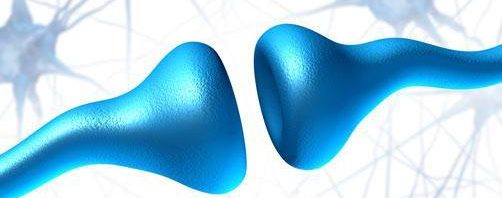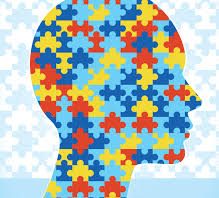Did you know that obesity can be considered a brain disorder?
That it can effect the way our brain is working, that all the extra fat and sugar in a person’s diet if it is poor can actually change the brain. Obesity is thought as of a negative thing for the health, that it is bad to be overweight as different function sin the body may not be working properly.
And while this may be true in some respect, the paper that we read this week addressed how it is in fact the high fat and high sugar diets that affect the brain more so than just being overweight in itself.
Thus, if someone who was just genetically predisposed to being on the heftier side, if they were to live a healthy lifestyle and eat good food not containing a lot of fat or sugar, and exercised regularly, they would not have the negative effects occurring in their brain, and may in fact be healthier than someone who is skinny but has poor eating habits and does not exercise regularly.
Multiple factors can lead to someone being/becoming, you can eat the wrong things at the wrong time, your mother could have had a high fat diet while pregnant, or you could be genetically predisposed. Each of these effect how likely one is to become overweight; however, sometimes the brain is also working with the outside factors.
Poor diets can “disrupt the blood brain barrier in the hippocampus” which can then lead to chemicals being in the brain that are not supposed to be, which can lead to certain functions of the brain not being carried out. Specifically we see a change in the POMC neuron working improperly, which can lead to lack of signals being sent telling the body that it is full. Thus, when the brain is exposed to a poor diet, the effect it has on the blood brain barrier can lead to an intake of more food. Poor diets that are high in sugar can also be linked to diabetes, as the high sugar intake can lead to insulin resistance.
With the array of effect on the brain, people who have poor diets, or are just overeating, can experience problems like decreased ability to learn, decreased memory, decreased drive to move or exercise, lower attention span and poor overall brain function. Obesity, in addition to all of the previously listed affects, can also lead to low or high blood sugar, diabetes, high blood pressure and metabolic syndrome. The scary things about these effects though is that there is a lag between the time of which one eats poorly and the time when the symptoms arise, so the best way to avoid these is just by living a healthy lifestyle.
After discovering that obesity makes true changes to the brain, I was thinking how unfortunate it is that those who are overweight but were just born that way have all of these various problems in the brain.
However, after looking more closely, it is largely mentioned that the poor diet is what makes the biggest impact on the brain, and that it matters less the weight of the person and more how they treat their body.
Autism: a Disease of Synapses
“Autism is neurodevelopmental disorder characterized by impairments in communication, social behavior, and repetitive behaviors” https://moodle.cord.edu/pluginfile.php/468408/mod_resource/content/1/autism%20and%20environ.pdf
Causes of Autism:



- genetic mutations
- Environmental factors
Genetic mutations: in genes responsible for encoding proteins involved in the signal transduction form the synapse to the nucleus signaling pathway cause complexity in this synapse as well as delayed sleep-phase syndrome.
Environmental factors:
- Prenatal viral infections: causes early fatal brain development, which can be linked to a higher risk of autism. The outcome of exposure depends on the maternal immune system and developmental stage of the fetus. Examples are: prenatal influenza, rubella, and cytomegalovirus infections.
- Zinc deficiency: it is necessary to have metal ions homeostasis for proper brain function and its disruption is linked to neurological symptoms and cognitive disease.
- Maternal diabetes: diabetes of the mother during pregnancy can be a risk factor for development of autism in offspring.
- Prenatal and perinatal stress: exposure to either stress hormones or psychological stress of the mother in are associated with greater risk of autism in offspring.
- Toxins such as prenatally exposure to valproic acid
- Parental age: studies indicate that advanced age of both mother and father is a risk factor for autism.
Vaccination?
After discussing the risk factors leading to autism, the important question of whether or not to vaccine is among many families in the society. There are many people who are strongly against vaccination. The unfortunate feelings of mistrust between the physicians and parents can be sensed to some extend among those who are against vaccination. As we discussed in our group, the physicians can make a difference in improving the situation by spending more time with the patients and speak about the benefits of the vaccines and educate the parents who bring their children to them. Having vaccination for autism mandatory in order to be able to attend public schools was also explored in our group. Such regulations takes away the right of making decision about health care from individuals. We also spoke about the importance of having autistic children in the same classrooms with other student. It is critical because it helps autistic students to interact and learn socializing skills. It also helps other students to develop friendship relationships with autistic students and become exposed to autism. This helps them to interact and develop skills, which can help them in their future lives as individuals who are going to take on jobs and live in the society.
If not vaccines: what is causing so much more autism?
It has been well and widely substantiated that vaccines do not cause autism. DO NOT. In any way, shape, or form. Yet, there has been a drastic increase in the prevalence of autism as shown by multiple reputable health-tracking and census organizations. So, since vaccines are not (NOT!) a viable scapegoat for the blame, where is all this autism coming from?
So far, there have been studies examining international changes in the diagnostic criteria (they have been widened to include more symptoms and conditions), reporting practices, and provider awareness all over the globe. These studies have shown that the changes in diagnosis, reporting, and awareness account for approximately 60% of the increase in autism cases worldwide. This is a significant number; it shows that many of the individuals diagnosed with autism in recent years, have not sustained the condition because of things like vaccines, GMO (genetically modified organisms) presence in food, or increases in screen time as technology advances. They were just “flying under the radar” in the past, and now, thanks to the inclusive nature of new guidelines are more easily identified so they can get the help they need to be successful.
So where can the other 40% of the increases in autism be attributed? Many studies have shown that certain environmental factors have a moderate to strong association with autism including prenatal viral infection, prenatal stress, the ages of the parents, and toxin (ie: drugs) exposure pre- or postnatally. These factors often lead to dysregulation of the immune system.
The dysregulation of the immune system, even while in utero, can lead to changes in the biochemical pathways within the cell and the developmental challenges individuals with autism often face. The chemicals that increase inflammation also control parts of different pathways called the p38 MAPK and ERK pathways (named after the central molecule). The p38 MAPK and ERK pathways control many functions in cells, and thus, they body as a whole. This means that when the immune system isn’t working as a baby develops, there will also be changes to major pathways such as MAPK and ERK which can lead to the cognitive challenges of autism by changing the response in neurons to stimuli. The changes in how neurons react to their stimuli (neurotransmitters) changes the shape of the neuron (branching) and the number of areas where it can “talk” to other neurons (synapses).
So, while much of the increase in prevalence of autism can be attributed to awareness and increased reporting and diagnosis, there are environmental factors that may be associated with an increased risk of an individual developing autism. However, these risk factors are wide-reaching and difficult to control (except perhaps drug use), thus making it clear that more research needs to be done before it can be definitely announced what “causes” autism.
The Main Problem With Autism
The main problem with autism in my opinion is in the diagnosis of the disease. The spectrum of autism has a ridiculously large range, spanning from Asperger’s syndrome to Childhood Disintegrative Disorder (CDD). Asperger’s is considered the mildest form of autism, while CDD is the most severe. The problem with the autism spectrum is that the symptoms and lifestyle of a person with Asperger’s have few similarities with a person diagnosed with CDD, especially when considering the severeness of the symptoms they do share.
These two “types” of autism should not be considered the same disease. People with Asperger’s are characterized as being obsessed with certain topics and a slight social impairment. A child with CDD, or Rett syndrome(another severe form of autism) will display rapid loss of social, language, and intellectual abilities as early as age 2. In some cases, decreased head growth is also associated with these diseases(http://www.webmd.com/brain/autism/autism-spectrum-disorders?page=1).
Asperger’s syndrome should not be associated with autism in general. If you consider only the symptoms of the different “types” of autism, Asperger’s does not belong on the list. Almost all other forms of autism include symptoms such as; intellectual reduction, severe loss of communication, seizures, and occasionally mental retardation. I believe Asperger’s is only considered a disease because we don’t understand enough about the causes of different mental diseases and more importantly, society likes to label and categorize people-especially people who seem different.
Asperger’s syndrome is also not strongly associated with any specific genetic mutation, unlike other autism “types”(http://ghr.nlm.nih.gov/condition/asperger-syndrome). This means environmental factors play a larger role in the onset of Asperger’s. People with Asperger’s simply have somewhat poor social skills and have a slightly obsessive personality(http://www.webmd.com/brain/autism/autism-spectrum-disorders?page=1). These attributes are seen often in people considered “healthy” individuals. Some studies even show people with Asperger’s are often found to have a higher level of intelligence than those without the disease(http://ghr.nlm.nih.gov/condition/asperger-syndrome).
While I don’t believe that Asperger’s syndrome should be included in the autism spectrum, I do not neglect the rest of the spectrum. Even though autism is a multifactoral disease, I do think the part of the answer to the specific treatment and cure to autism lies in the transsynaptic signaling of certain neuron types in autistic patients. Patients with severe autism often have mutations in specific genes coding for transsynaptic cell adhesion molecules. These molecules are neuroligin and neurexin.
Neurexin molecules are located on the pre-synaptic neuron and it binds to neuroligin, found on the post-synaptic neuron. When mutations occur in genes encoding for these molecules, it often partially inhibits the ability of neuroligin to leave the endoplasmic reticulum to be transported to it’s correct location in the post-synaptic neuron(http://www.researchgate.net/publication/49734973_Cell_Adhesion_Molecules_and_Their_Involvement_in_Autism_Spectrum_Disorder). Another result of the mutation is a change is synaptic specificity of neuroligin molecules from glutamatergic neurons to GABAergic neurons(http://www.researchgate.net/publication/49734973_Cell_Adhesion_Molecules_and_Their_Involvement_in_Autism_Spectrum_Disorder).
These mutations cause an increase in the overall increase in inhibitory synaptic transmissions in the brain. This problem could be at the source of the neurological and physical symptoms of autism. Genetic modification of these certain genes could be a potential fix to the issue. Other methods such as supplemental neuroligin and neurexin would likely prove ineffective. Thus, more research into potential solutions to the transsynaptic cell adhesion problem should be addressed in the future.
The story of nitric oxide: when does it become bad?
Nitric oxide is normally a part of the brain’s mechanisms. It functions as a neurotransmitter to either promote or block signals between neurons. However, damage to glial cells results in an uncontrolled increase in nitric oxide. Glial cells are the support system cells of the central nervous system. When they are damaged it can lead to damage to the neurons and dysfunction of cognitive processes, such as is present after traumatic brain injury through release of proinflammatory molecules including nitric oxide. Nitric oxide is involved in the process of inflammation which is usually a good thing when tissues are damaged; think of if you hurt your hand. In that instance, inflammation is good and helps promote healing. However, in your brain, there is not much room for the expansion of tissue due to increased blood flow and fluid associated with inflammation and the cells affected (neurons and glial cells) are very sensitive to the chemical changes following injury. Therefore, inflammation in the brain quickly leads to cell injury and death in populations of cells that are often difficult or impossible to replace. This type of inflammation can occur with near all neurological conditions from head injury to multiple sclerosis.
The damaged caused by nitric oxide in the brain is wide reaching and significant. It can include upregulation of reactive nitrogen species which further damage tissue and promote inflammation. It may also decrease mitochondrial function to decrease the ability of the cell to produce enough energy to live. Finally, nitric oxide can both lead to vasodilation (increasing the diameter of the blood vessels entering the brain) and disrupting the blood brain barrier. This results in a rush of unfiltered blood into the brain carrying with it more immune cells as well as possible toxins. In these ways, increased nitric oxide following injury or in a disease state can exacerbate the condition and symptoms.
Because of the beneficial signaling involving nitric oxide throughout the body, including the brain, it is not appropriate to try to completely eradicate nitric oxide, its precursors, or the enzymes that make it. Often times, genetically modified animals without these genes (called knockouts) do not survive long because important pathways that use nitric oxide, but unrelated to inflammation, also cannot happen. Therefore, to utilize the presence of nitric oxide in an injured environment to aid in diagnosis and/or treatment of neurological condition, it must be targeted specifically in the immune cells that cause the damage in the inflamed brain, especially glial cells.
The abandoned area of drug development—Parkinson’s Disease
It seems as though every time I turn on the TV there are commercials for new types of medication. Unfortunately, for some devastating conditions there haven’t been updated medications in 30 years or more. One of these is the neuromuscular condition, Parkinson’s Disease. Currently Parkinson’s Disease is still treated with dopamine replacement therapy (L-dopa and other agonists) as well as blocking the dopamine from reentering the cell that released it. This type of treatment only helps to manage the early symptoms and does not cure Parkinson’s Disease.
Is it time to target a new area of the disease other than the low levels of dopamine? It is obviously an important part of the disease process, but has been shown to only be one component in an ever-expanding network of dysregulation and inflammation that is a park of Parkinson’s Disease.
One idea among the scientific community is that toxic molecules spread slowly through the brain, irreversibly damaging neurons and tissue, ending up in the area of the brain with many dopamine neurons. This is when the symptoms that many people associate with diagnosable Parkinson’s Disease appear such as the change in motor movements including tremors. This occurs because a molecule called alpha-synuclein is misfolded and combines with collections of immune cells to form Lewy bodies. You may have heard of these before when referencing dementia (Lewy body dementia). This idea states that changes in areas such as gene expression, environmental toxicity, and dysregulation of cellular organelles such as mitochondria (the “powerhouse” of the cell according to high school biology) leads to the formation of these toxic Lewy bodies. Scientists believe that the Lewy bodies begin to develop at the nerve from the nose (olfactory) and back of the brain before progressively moving into higher functions in the cortical regions which results in some of the changes in movement regulation as well as many cognitive functions.
Usually diagnosis occurs at a much later stage than the beginning of the Lewy body formation. Perhaps both diagnosis and treatment could be studied to lead to biomarkers to find and/or target for earlier diagnosis and more effective treatment. The formation of Lewy bodies may also lead to the breakdown in function of other cellular processes, so treatment that focuses on this may be able to address symptoms and etiology (causes of the disease) from multiple angles, showing promise in the diagnosis and treatment of Parkinson’s Disease after a long drought in drug development progression.
Nitric Oxide: A Powerful Player in the Brain
Nitric oxide, like many things in the body, is something that is beneficial to the body in small concentrations but also potentially harmful in larger concentrations. In small concentrations, nitric oxide is neurotransmitter and neuromodulator, and is important in certain signaling pathways in the brain. However, in larger concentration, nitric oxide (NO) is dangerous to the brain, causing cell death within the neurons. NO is found to be a player in “stroke, neurodegenerative disease, demyelination and neuroinflammatory diseases” (Pathologic role of glial nitric oxide in adult and pediatric neuroinflammatory diseases).

Nitric oxide formation is assisted by three enzymes, neuronal nitric oxide synthase (nNOS), endothelial nitric oxide synthase (eNOS) and inducible nitric oxide synthase (iNOS) (https://en.wikipedia.org/wiki/Nitric_oxide_synthase). nNOS is important for NO synthesis in the central and peripheral nervous system. eNOS is crucial to nitric oxide synthesis in the blood vessels, and is a regulator of the vessel’s function. The last enzyme, iNOS is, activated by NF-κB, and cytokines such as TNF-α and IL-1, and the over activation of this particular enzyme by these can lead to negative effects in the body. This activation of iNOS occurs largely in the astrocytes and in microglia, which can then lead to neuronal damage a death. Thus, as we see, when there is more nitric oxide being produced there is more neuronal death by the over activated microglia.
NO overproduction can lead to multiple sclerosis (MS) and neuroinflammatory diseases, which include periventricular leukomalacia (PVL), Krabbe’s disease, and X-linked adrenoleukodystrophy (ALD). MS occurs when the myelin protecting nerve cells in the CNS are damaged. This can lead to mental and physical problems including “autonomic, visual, motor and sensory problems” that “are determined by the locations of the lesions within the nervous system” (https://en.wikipedia.org/wiki/Multiple_sclerosis). PVL is a neuroinflammatory disease is “a form of white-matter brain injury, characterized by the white matter necrosis” or white matter death in the brain (Pathologic role of glial nitric oxide in adult and pediatric neuroinflammatory diseases). Krabbe’s disease is a genetic disease which slowly destroys the white matter in the brain and damages the myelin sheaths in the central nervous system. ALD is also a demyelinating disease, but much quicker and can lead to death within a couple years after onset, or another form will lead to slow axon degeneration and eventually paralysis in the legs.
Nitric oxide is a chemical that requires a very delicate balance within our bodies, as it is important in relation to the microglia and astrocytes, as when they work appropriately are good for the brain, but when over activated can lead to damage to neurons and some of the diseases mentioned above. In today’s world, there is always the fear of trying to stay at an ultra-healthy level, that we will do what it takes to protect ourselves from getting things like cancer or some of these diseases. However, these precautions don’t always make a difference, as it is hard to prevent these NO diseases, as sometimes we are genetically predisposed to them and there is not much we can do to protect ourselves. Sometimes the environment plays a role in contracting the disease, especially exposure to toxins in the NO case, but even then it is hard to ensure avoidance of things that we may encounter on a daily basis. Sometimes, rather than living in fear of contracting these diseases which can come from an array of sources, we just need to hope our bodies will do their best to protect themselves from imbalances.
Autism and the Brain
First I just want to make it abundantly clear, vaccines do not cause autism. The main paper that people cite in order to show that autism and vaccines are related has been absolutely discredited by 99.99% of the scientific community. As a scientific community we have determined that there is no correlation between autism rates and vaccines. In addition, even if vaccines did cause autism (which they do not) the benefits of them vastly outweigh any of the costs. As a species we have only exterminated one virus, the small pox virus, and that was through careful vaccination programs. If you are against vaccines look up historical accounts of what small pox did to the human body and the survival rates.
Back to the point of this blog post… Autism and the brain…
Autism is an incredibly scary neurological disorder because we don’t know what causes it… Or even how to treat it. While we know many of the symptoms of autism, and how to treat some of the innumerable symptoms these treatments do not treat the disease they treat the symptoms. To actually treat the disease we would have to have a greater understanding of the brain than what we currently have. Will the day come that we have the ability to treat/cure autism through medication or alternative means? Yes. Is that day today, or even in the near future? No.
Currently treating Autism is kind of a guess and check, and hope that whatever medication is given to the patient is actually working, and not making other issues that we don’t know how to treat. Something that might help reduce autism in later generations would be to increase the amount of zinc we eat. A decrease in zinc (a VERY important metal in our body) is frequently seen in autistic patients, and this could be the cause of innumerable of the symptoms seen with autism. Before going out and buying all the zinc you can consume be aware of two things: 1) zinc treatments while somewhat helpful by no means undo autism and 2) if you consume too much zinc then you’ll have a completely different set of physiological disorders to contend with.
While researching autism I found an interesting correlation that scientists have known about for a while: how similar autism is to mercury poisoning. The similarities are stark, and quite frankly scary. The symptom list of in utero/infantile exposure of mercury reads almost identically to the symptoms of autism. In addition scientists found about a 2.1 higher concentration of mercury in autistic children than normal, non-autistic children. Does this mean mercury causes autism? No. Does this mean there’s some sort of correlation? Probably, but I would have to do more research in order to confidently say so one way or another.
Ultimately autism is a disease that as a scientific community we have no idea what causes it (but we know what doesn’t!) or even how to treat it. However this doesn’t mean that we should despair! Far from it, we should embrace how little we know and understand that we will be making leaps and bounds in the field of neuroscience in the not too distant future. Who knows, maybe in thirty or forty years I’ll be writing a post about how we have “cured” autism.
In a World with Autistic Children…
Having had a brother with Downs Syndrome, the conversations I have had with my parents over the years on their initial reactions after his birth have been very impactful on my life. I have asked them on multiple occasions on what they would have done if my brother had lived longer. Would they have put him in public school? Did they feel responsible at all for his Downs Syndrome condition? Did they treat him differently compared to how they treated me as a baby?
Their response was quite simple.
They would have chosen to enroll him in a public school setting, with help if needed. But they stressed the importance of loving him the same as if he didn’t have Downs Syndrome, showing how proud of him they were, and the fact that he was still their son. They knew they would have had to maintain a continual understanding of his condition and how certain approaches and conversations would be beneficial to his quality of life in the future, but this didn’t negatively affect their outlook.
Only one of the many qualities I am quite proud to recognize in both of my parents is their continued affirmation in how they knew they couldn’t blame themselves for my brother’s condition. They took precautions and did everything they could to bring into the world a healthy baby boy. They made sure I was vaccinated, as they knew having any possible complications with infection would only hurt his chances of survival. And they also put deep trust in the doctoral staff in our hometown. They knew they weren’t experts on this particular condition, and having someone there with answers was something they could take comfort in.
Fast-forward twenty years into the future. What has happened since this time? If a child is born with Downs Syndrome, or turns two or three and is showing signs of Autism, it appears as though many parents want someone or something to blame. WebMD appears to be more informative than a doctor who has received over eight years of schooling…
Particularly in Autism, there are many factors that could contribute to the cause of its appearance.
If the parents are looking for someone to blame, they should maybe first look at themselves.
Contributing factors:
Many retrospective correlational studies have shown how stress experienced by the mother during the end of her second or third trimester can have serious effects on the fetus in regards to autism spectrum disorder. The stress hormones of the mother possess the ability to cross the placenta and negatively affect the HPA axis (hypothalamus, pituitary, adrenals). The HPA axis is a major component of the neuroendocrine system, involved in digestion, the immune system, mood, emotional regulation, as well as how energy is stored and spent. According to Dr. Kinney and Dr. Munir, their published article on prenatal stress and risk for autism, included how autistic children have been shown to have a more hyperactive HPA axis, more than likely due to the mother’s stress hormones.

Further more, if parents want to further evaluate their role in their child’s condition, they should look at the age in which they had their child. If both are of advanced age, studies have shown this tends to have a higher correlation of producing offspring with autism spectrum disorder compared to younger parent generations, as toxins are constantly being built up in the system.
But if parents want true answers, and not just someone or something to blame, the unfortunate fact is, there aren’t many. There seem to be multiple possibilities without any firm confirmations.
It appears there may just be too much activity occurring in the brains of those with autism spectrum disorder. Some of those examples include an overabundance of synapses, with the pruning mechanisms within the brain appearing to be dysfunctional. With this, it appears as though the gene SOS, and the gene SYNGAP1 are in too much supply and not enough supply respectively, causing overactivation particularly in the MAPK pathway (a pathway responsible for regulation of translation and transcription).
But regardless of any form of mental disability, whether that be Autism, or even Downs Syndrome, I must ask some of these parents,
would that really change how you love your child any differently?
I don’t believe the problem lies “within a world with autistic children.” Who are we to blame? Vaccines? No. Doctors. No. I also don’t believe the blame belongs on the shoulders of the parents either. I believe progress starts with individuals, especially parents, getting correctly informed, and making those conscious decisions to do what is best for all children, regardless of their condition.

The Missing Puzzle Piece: Environmental Factors in Autism Spectrum Disorder
As a symbol representing the face of autism in our society, the puzzle piece has come to represent the diversity and complexity of autism as a spectrum of disorders. It also represents the unique characteristics of each individual with autism, as well as the diversity of families that the disorder affects. In short, the pieces are meant to symbolize the individuality of autistic individuals and their families as well as the connection that each individual has to others living with the disorder. However, I would argue that the most important piece of this puzzle is missing. Individuals and families are not the only diverse aspect of autism spectrum disorder, and they are not the true connection between each case. While subtle, and often undetectable, the true connection lies in the environmental and circumstantial factors that largely contribute to an increased risk of autism.
In the most recent article I read for my neurochemistry class, a long, and somewhat grim, list of potential risk factors for autism were reviewed. I hope to highlight some of the promising ones, for it seems that none of the many factors have a direct correlation with the development of autism in one’s offspring. However, each seems to be an environmental, or simply a circumstantial, factor that may contribute to the increased risk of autism in offspring.
As I review the some of the potential risk factors, I hope to make clear the amount that circumstance plays in increasing autism risk. Many of the factors are not entirely preventable or foreseeable. They include:
Prenatal Viral Infection
Having an autoimmune disorder, coming down with an infection, or simply having allergies can increase the risk of autism in offspring due to the weakened immune system of the mother. These risk factors are inevitable chances one takes when having a child. Preventative measures can be taken during pregnancy to lower infection risk, but the human immune system always has some chance of succumbing to infection.
Prenatal and Perinatal Stress
Circumstances such as the death of a loved one, sudden unemployment, living through a natural disaster, or tension in personal relationships can all add large amounts of stress to the life of a person. However, these types of extreme stressors increase the risk of autism in ones offspring during pregnancy. Again, all of these circumstances are unplanned, unavoidable, and to a certain extent inevitable. The stress of events, such as these, lowers the immune system, increasing autism risk in offspring.
Parental Age
Both maternal and paternal age can be a risk factor for autism in offspring. Parents 35+ years of age are said to have a higher risk of bearing a child with autism. If only one parent is above the age of 35, the risk of their child having offspring is the same as if both parents are above the age of 35. Genetic factors have been discovered that may contribute to the patho-mechanism in parental age and autism risk. Nevertheless, age is again a circumstantial factor that is becoming more and more common in our society as mothers are waiting to have children later in life. This can obviously be counter acted by having children at a younger age, but with more and more women in the workforce developing careers, it is difficult to encourage all women to do so.
Toxins, Diabetes, and Others
Finally, a few last examples of environmental factors include exposure to toxins, either from the environment or from prescription medication taken during pregnancy, and maternal diabetes. Exposure to pesticides is an example of toxins that increase autism risk. Furthermore, medications the mother needs for mental stability can lead to an increased risk in autism in her child.
As I hope you can see, autism has the ability to affect any type of family, simply because the risk factors are events, environments, or circumstances that cannot be predicted, or altogether prevented. Autism is a puzzle. It is a spectrum of somewhat ambiguous disorders all connected by risk factors stemming from the environment or simple circumstance. The families of those with autism and those living with the disorder can find community in the network of support surrounding autism, and they can find some solace in knowing that autism is no one’s fault, but perhaps somewhat a happening of circumstance.









